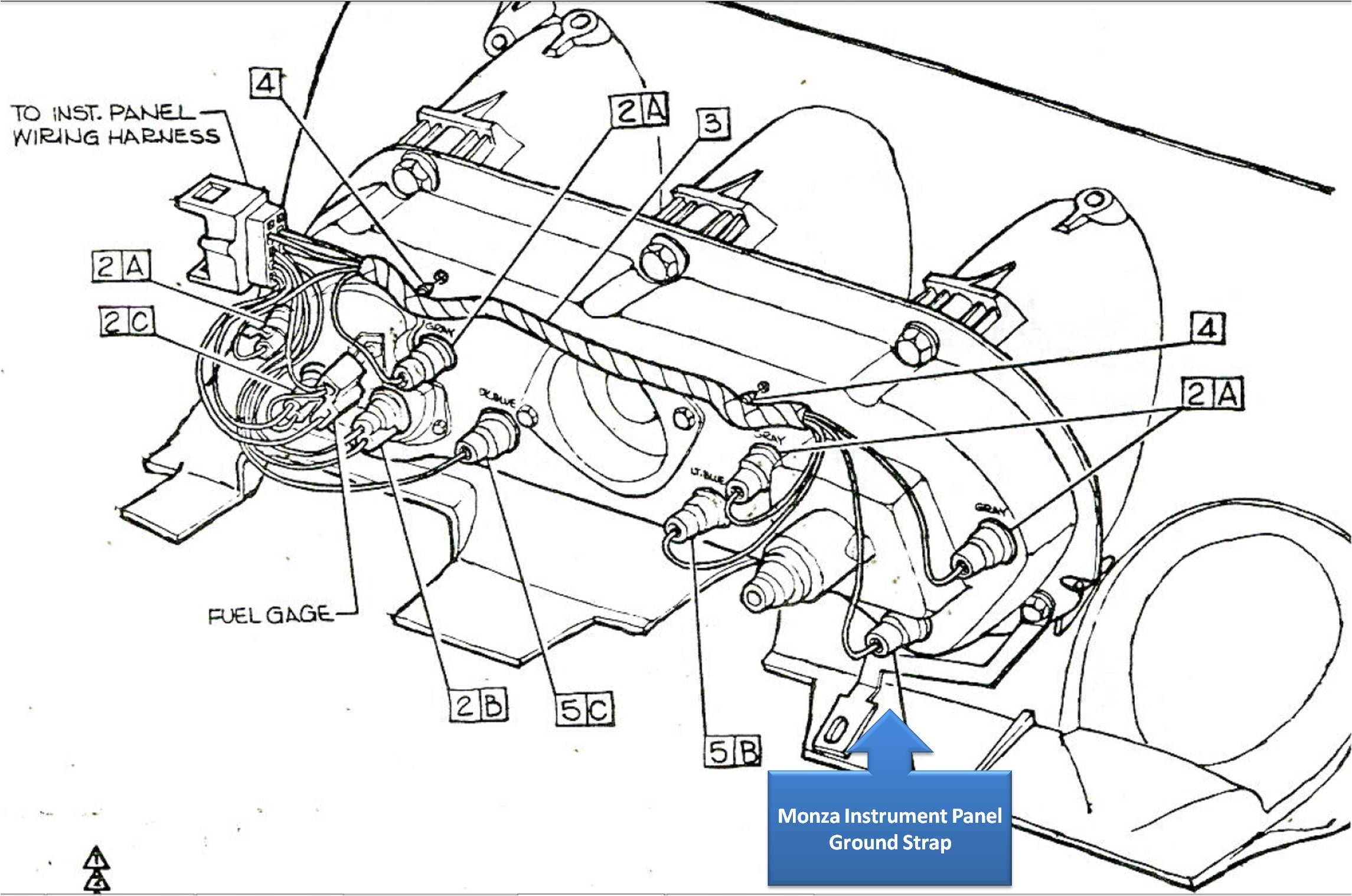Hi everyone,
The PO of my 67 coupe installed a Spyder tach in the middle opening in the instrument cluster. It looks nice but has never given me an accurate reading. I was driving on the interstate tonight doing 65-70mph and the tach was reading 2100rpm (it seems to prefer 2100rpm regardless of actual engine speed). Just for kicks, I applied full throttle for a second, and the tach instantly went off the top of the scale. When I returned to a cruising throttle position, the tach returned to 2100rpm. It consistently behaved this way every time I hit the throttle.
What about full throttle makes the tach react so dramatically? Since the engine speed didn't really change in the instant that I hit the throttle, I don't see why the tach reading would change.
I do have a Pertronix 1 installed which seems to work very reliably.
Thanks!
John
Jumpy Tach
- 66CorsaConv
- Posts: 78
- Joined: Wed Jun 26, 2013 1:25 pm
- Location: Oakland Mi.
Re: Jumpy Tach
My 66 Corsa 4-carb had a "flaky tach". What I figured out was bad or "flaky" ground in the distributor breaker plate. Mine would bounce all over the place on part throttle where the vacuum advance would move the breaker plate. Full throttle = NO vacuum no motion OK tach. Zero throttle = NO vacuum no motion OK tach.
Everything in between and the needle was everywhere. Yours may not be the same but the rebuilt High Perf one from Clarks with a added ground wire did the trick.
I'm not familliar with the Pertronix but the stock tach is set up to read based on stock coil and breaker impedances and voltages with a resistor wire in-line in the harness.
However the large change in read out RPM with accelerator only may be breaker plate vacuum advance motion still.
Everything in between and the needle was everywhere. Yours may not be the same but the rebuilt High Perf one from Clarks with a added ground wire did the trick.
I'm not familliar with the Pertronix but the stock tach is set up to read based on stock coil and breaker impedances and voltages with a resistor wire in-line in the harness.
However the large change in read out RPM with accelerator only may be breaker plate vacuum advance motion still.
- bbodie52
- Corvair of the Month

- Posts: 12141
- Joined: Mon Aug 06, 2012 12:33 pm
- Location: Lake Chatuge Hayesville, NC
- Contact:
Re: Jumpy Tach
The Spyder tachometer has a very simple wiring. The electronic circuit in the gauge counts ignition pulses at the negative coil terminal, with a 20 Gauge Brown sensor wire connected between the tachometer and the coil. The other wire connected to the tachometer is a 20 Gauge B/P (Black with Pink Stripe) wire providing 12V DC from a switched circuit that only has power when the key is in the ON position. However, every electrical device in the car must also have a ground return path to the negative battery terminal, via the car chassis.
You will notice only two wires on the back of the tachometer — the brown coil sensor wire and the black power wire. The is no ground wire because the tachometer case is ground, and it is bolted to the metal Spyder instrument panel which is grounded to the Corvair chassis.
In the case of the Late Model 500/700/Corsa instrument panels, they were manufactured out of molded non-conductive plastic. Because they were not metal, a separate point to point ground strap was attached to each section of the instrument panel that needed a ground return path. As you can see in the illustration below, the final connection point for this grounding strap system was a single screw that attached it to the metal dashboard frame. It is a somewhat common problem in 1965-1969 Corvairs for the instrument panel to develop problems with the electric gauges (fuel, head temperature, tachometer, clock, and display lights) due to a loose or faulty ground. Securing the ground connections and ensuring a good ground for each gauge will often clear instrument panel display problems.

There is always a possibility that the old Spyder tachometer itself is faulty, but I would check the power and ground connections first, as well as the tachometer ignition sensor lead. They may be where you trouble is.
You will notice only two wires on the back of the tachometer — the brown coil sensor wire and the black power wire. The is no ground wire because the tachometer case is ground, and it is bolted to the metal Spyder instrument panel which is grounded to the Corvair chassis.
In the case of the Late Model 500/700/Corsa instrument panels, they were manufactured out of molded non-conductive plastic. Because they were not metal, a separate point to point ground strap was attached to each section of the instrument panel that needed a ground return path. As you can see in the illustration below, the final connection point for this grounding strap system was a single screw that attached it to the metal dashboard frame. It is a somewhat common problem in 1965-1969 Corvairs for the instrument panel to develop problems with the electric gauges (fuel, head temperature, tachometer, clock, and display lights) due to a loose or faulty ground. Securing the ground connections and ensuring a good ground for each gauge will often clear instrument panel display problems.
There is always a possibility that the old Spyder tachometer itself is faulty, but I would check the power and ground connections first, as well as the tachometer ignition sensor lead. They may be where you trouble is.
Brad Bodie
Lake Chatuge, North Carolina
 1966 Corvair Corsa Convertible
1966 Corvair Corsa Convertible
Lake Chatuge, North Carolina
 1966 Corvair Corsa Convertible
1966 Corvair Corsa Convertible